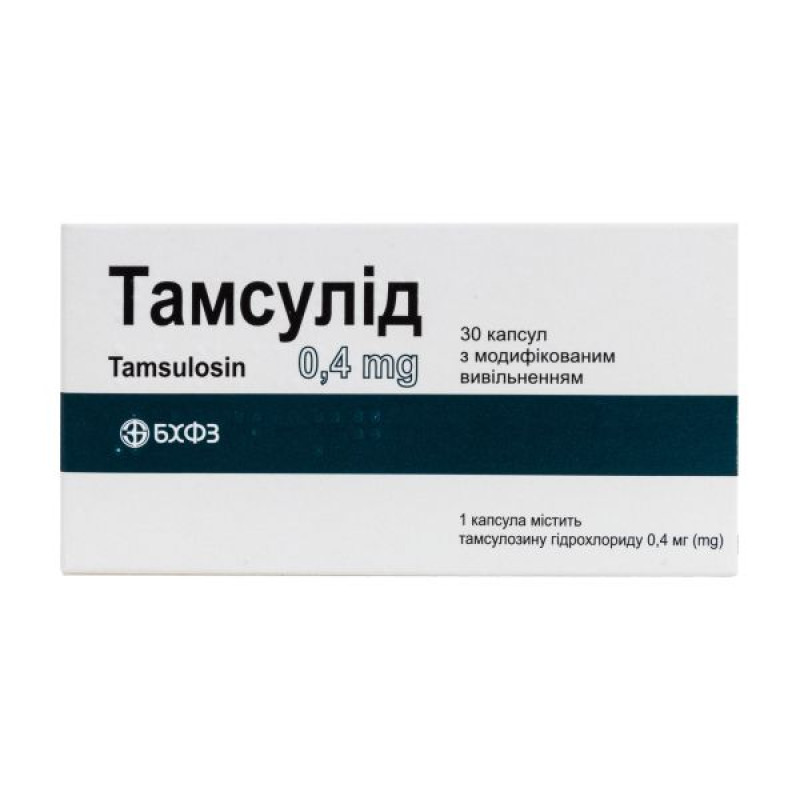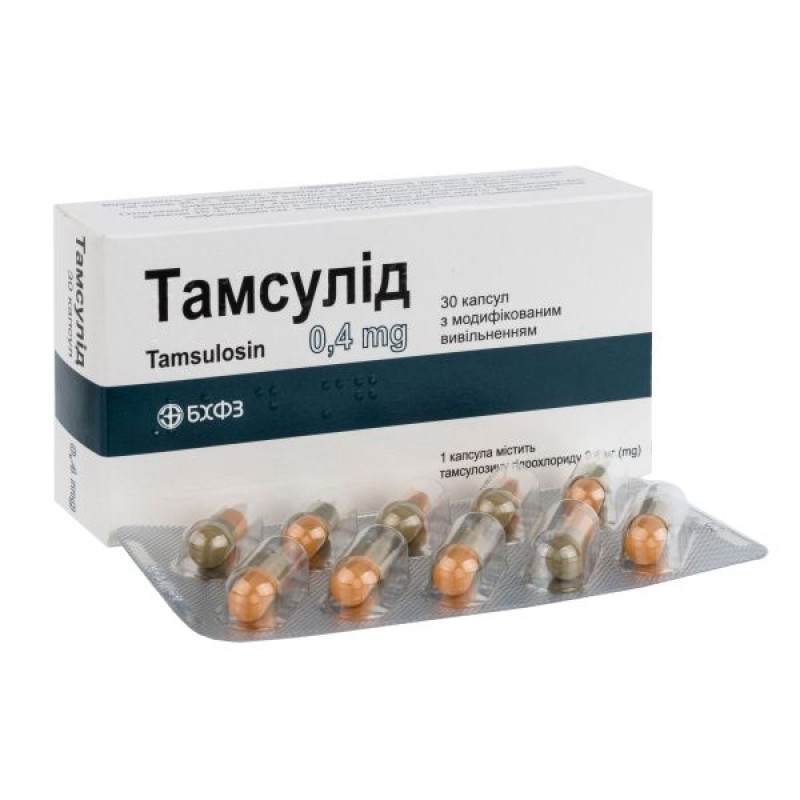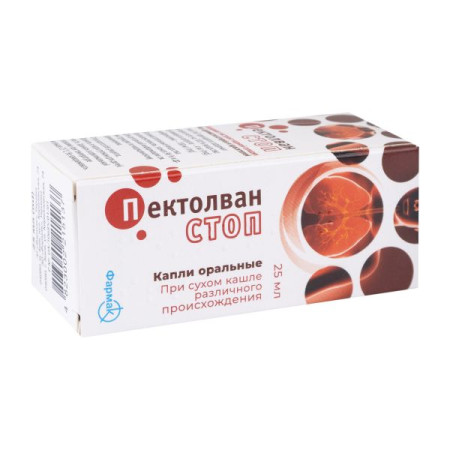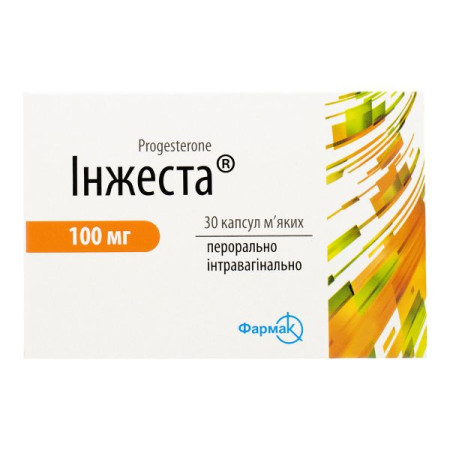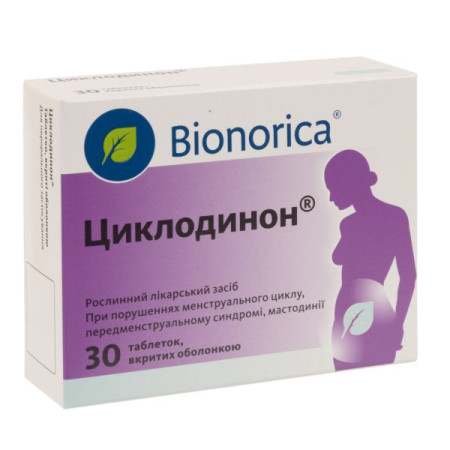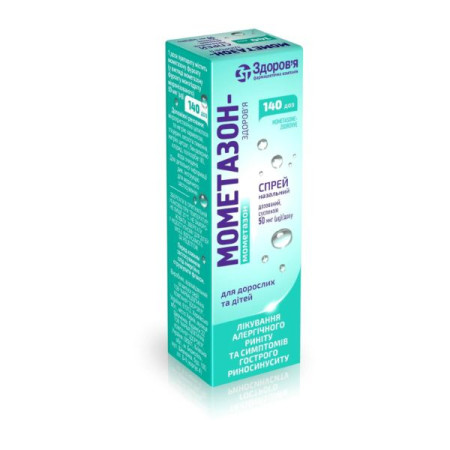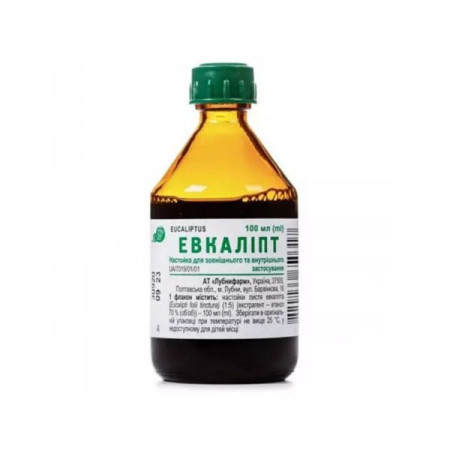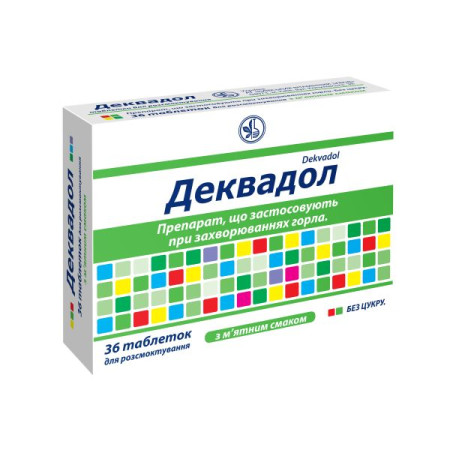Tamsulid capsules 0.4 mg blister No. 30
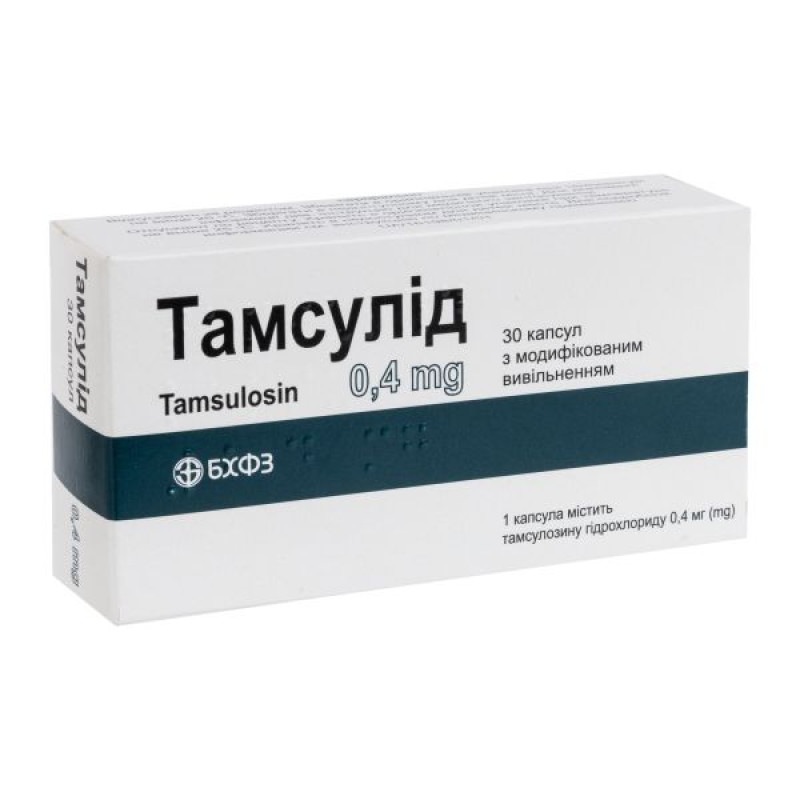
Instructions Tamsulid capsules 0.4 mg blister No. 30
Composition
active ingredient: tamsulosin hydrochloride;
1 capsule contains tamsulosin hydrochloride 0.4 mg;
excipients: microcrystalline cellulose, dispersion of 30% methacrylate acid - ethyl acrylate copolymer (1:1) containing polysorbate 80 (about 2.8%) and sodium lauryl sulfate (about 0.7%), triethyl citrate, talc;
Pellet coating: dispersion of 30% methacrylate acid – ethyl acrylate copolymer (1:1), containing polysorbate 80 (about 2.8%) and sodium lauryl sulfate (about 0.7%), talc, triethyl citrate;
capsule composition: red iron oxide (E 172), titanium dioxide (E 171), yellow iron oxide (E 172), gelatin, indigo carmine (E 132), black iron oxide (E 172).
Dosage form
Modified-release capsules.
Main physicochemical properties: hard gelatin capsules with an orange body and an olive cap. The capsule contains white or almost white pellets.
Pharmacotherapeutic group
Drugs used in benign prostatic hyperplasia. Alpha1-adrenoceptor antagonists. ATC code G04C A02.
Pharmacological properties
Pharmacodynamics
The mechanism of action of tamsulosin is due to selective competitive binding to postsynaptic α1-adrenoceptors, in particular to the α1A and α1D subtypes, which leads to a decrease in the tone of the smooth muscles of the prostate gland, bladder neck, prostatic part of the urethra and improvement in urine output.
At the same time, symptoms of obstruction and irritation associated with benign prostatic hyperplasia are reduced. α1-adrenoceptor antagonists have the ability to lower blood pressure by reducing peripheral vascular tone. During testing of the active substance tamsulosin hydrochloride, no clinically significant decrease in blood pressure was observed. The drug does not cause a clinically significant decrease in systemic blood pressure in patients with normal initial blood pressure.
The therapeutic effect usually develops 2 weeks after starting the drug, although a reduction in symptoms is possible after taking the first doses.
Pharmacokinetics
Absorption. Tamsulosin is rapidly and almost completely absorbed from the intestine. Absorption is slowed down if the drug is used after a meal. Uniform release of the active substance can be achieved if tamsulosin is taken at the same time after a meal. Tamsulosin has linear kinetics. Peak plasma levels are reached approximately 6 hours after a single dose of tamsulosin taken after a meal. Steady-state concentrations are reached by day 5 after daily administration, with peak plasma concentrations being 2/3 higher than after a single dose. Although these data only apply to elderly patients, a similar result can be expected in younger patients.
Plasma levels of tamsulosin may vary significantly between patients, both after a single dose and after multiple administration.
Distribution: Plasma protein binding is 99%. The volume of distribution is small (approximately 0.2 l/kg).
Metabolism: Tamsulosin is not subject to the first-pass effect and is slowly metabolized in the liver to form pharmacologically active metabolites that retain high selectivity for α1-adrenoceptors. Most of the active substance is present in the blood in unchanged form.
Excretion: Tamsulosin and its metabolites are excreted primarily in the urine, with approximately 9% of the dose excreted unchanged.
After a single dose of tamsulosin after a meal and at steady state, the half-lives are approximately 10 and 13 hours, respectively.
Indication
Treatment of functional disorders of the lower urinary tract in benign prostatic hyperplasia.
Contraindication
Hypersensitivity to tamsulosin hydrochloride, including drug-induced angioedema, or to any of the excipients; history of orthostatic hypotension; severe hepatic impairment.
Interaction with other medicinal products and other types of interactions
Interaction studies have only been conducted in adults.
No drug interactions have been observed when tamsulosin hydrochloride is used concomitantly with atenolol, enalapril, nifedipine, digoxin or theophylline. Concomitant use with cimetidine increases and with furosemide decreases the plasma concentration of tamsulosin, but since these levels remain within the normal range, no special dosage adjustment of tamsulosin is required.
Concomitant use with strong CYP3A4 inhibitors may lead to increased exposure to tamsulosin hydrochloride. Co-administration with ketoconazole (a known strong CYP3A4 inhibitor) results in an increase in AUC and Cmax of tamsulosin hydrochloride by 2.8 and 2.2 fold, respectively.
Tamsulosin hydrochloride should be used with caution in combination with strong (e.g. ketoconazole, itraconazole, voriconazole, clarithromycin, indinavir, nelfinavir, ritonavir, saquinavir) and moderate (e.g. erythromycin) CYP3A4 inhibitors. And in patients with poor CYP2D6 metabolizers, tamsulosin hydrochloride should not be administered in combination with strong CYP3A4 inhibitors.
Concomitant use with paroxetine (a strong CYP2D6 inhibitor) leads to an increase in Cmax and AUC of tamsulosin by 1.3 and 1.6 times, respectively, but this increase is not considered clinically significant.
There is a risk of increased hypotensive effect when tamsulosin is used simultaneously with drugs that can lower blood pressure, including anesthetics, phosphodiesterase-5 inhibitors, other α1-adrenoblockers.
In vitro studies with liver microsomal fractions showed no interaction with amitriptyline, salbutamol, glibenclamide and finasteride.
Application features
As with other α1-adrenergic blockers, in some cases, when using Tamsulid, a decrease in blood pressure is possible, which can sometimes lead to loss of consciousness. At the first signs of orthostatic hypotension (dizziness, weakness), the patient should take a horizontal position until the above symptoms disappear.
Before starting treatment with Tamsulid, a medical examination should be performed to identify other concomitant diseases that may cause the same symptoms as benign prostatic hyperplasia. Before starting treatment, a rectal examination of the prostate should be performed and, if necessary, prostate-specific antigen (PSA) levels should be monitored before starting and regularly during treatment.
The drug should be prescribed with extreme caution to patients with severe renal insufficiency (creatinine clearance < 10 ml/min) due to the lack of sufficient clinical experience.
Angioedema has been reported rarely following the use of tamsulosin. In such cases, treatment should be discontinued immediately and the patient monitored until the edema resolves; tamsulosin should not be re-administered.
Some patients who have taken or are taking tamsulosin have experienced iris instability (inactive pupil syndrome (IFIS), a variant of pinhole syndrome) during cataract and glaucoma surgery, which is associated with α1-receptor blockade. IFIS increases the risk of ocular complications during or after such surgery.
It is generally recommended that tamsulosin be discontinued 1-2 weeks prior to cataract and glaucoma surgery, but the benefit, appropriateness, and timing of tamsulosin discontinuation have not been clearly established. IFIS has also been reported in patients who discontinued tamsulosin for a longer period prior to surgery.
Tamsulosin hydrochloride therapy is not recommended in patients scheduled for cataract or glaucoma surgery. When preparing for surgery, ophthalmic surgeons should inquire whether the patient has taken (or is taking) tamsulosin in order to prevent possible complications associated with IFIS.
Tamsulosin is extensively metabolised, mainly by CYP3A4 and CYP2D6. Patients with poor CYP2D6 metabolism should not be given tamsulosin hydrochloride in combination with strong CYP3A4 inhibitors (e.g. ketoconazole).
Tamsulosin hydrochloride should be used with caution in combination with strong (e.g. ketoconazole) and moderate CYP3A4 inhibitors (e.g. erythromycin) (see section "Interaction with other medicinal products and other types of interactions").
Cases of allergic reactions to tamsulosin have been reported in patients with a history of allergy to sulfonamides. Caution should be exercised when administering tamsulosin hydrochloride to patients with a history of allergy to sulfonamides.
The drug should be taken as prescribed by a doctor.
Ability to influence reaction speed when driving vehicles or other mechanisms
Studies on the effect of the drug on the ability to drive or use machines have not been conducted. However, patients should be warned about the possibility of dizziness.
Use during pregnancy or breastfeeding
Tamsulid is not indicated for use in women.
Fertility: Ejaculation disorders have been reported in short- and long-term clinical trials with tamsulosin. Cases of ejaculation disorders, retrograde ejaculation and insufficient ejaculation have been reported in the post-marketing period with tamsulosin.
Method of administration and doses
Elderly patients do not require dose adjustment. However, it should be borne in mind that geriatric patients are at increased risk of orthostatic hypotension.
Patients with renal insufficiency do not require dose adjustment.
Patients with mild to moderate hepatic impairment do not require dose adjustment (see also “Contraindications”).
Children
The drug is not for use in children. The safety and efficacy of tamsulosin in children (under 18 years of age) have not been evaluated.
Overdose
Symptoms: Overdose of tamsulosin hydrochloride may cause acute and severe hypotensive effects, as well as vomiting and diarrhea. Severe hypotensive effects have been observed with varying degrees of overdose.
Treatment. In the event of acute arterial hypotension due to overdose, supportive therapy should be carried out aimed at restoring normal cardiovascular function (for example, the patient should take a horizontal position). If this does not help, infusion therapy and vasopressors should be prescribed. Renal function should be monitored and general supportive measures should be taken. Due to the high degree of binding of tamsulosin to plasma proteins, hemodialysis is unlikely to be appropriate.
In order to stop further absorption of the drug, vomiting can be induced artificially. In case of overdose with a significant amount of the drug, the patient should be washed with a stomach, activated charcoal and low-osmotic laxatives such as sodium sulfate can be used.
Adverse reactions
Adverse reactions are classified by organ system and frequency of occurrence: common (> 1/100, < 1/10); uncommon (> 1/1000, < 1/100); rare (> 1/10000, < 1/1000); very rare (< 1/10000), unknown (cannot be estimated from available data).
Nervous system: often - dizziness, infrequently - headache, rarely - fainting (syncope).
Organs of vision: rarely - blurred vision*, visual impairment*.
Cardiovascular system: infrequently - orthostatic hypotension, palpitations.
Respiratory system: infrequently - rhinitis, unknown - epistaxis*.
Reproductive system: often - ejaculation disorders, including retrograde ejaculation and ejaculation failure, very rarely - priapism.
Digestive tract: infrequently - constipation, diarrhea, nausea, vomiting, unknown - dry mouth.
Skin and subcutaneous tissue: infrequently - itching, rash, urticaria, rarely - angioedema, very rarely - Stevens-Johnson syndrome, not known - erythema multiforme*, exfoliative dermatitis*.
General disorders: infrequently - asthenia.
*Observed in the post-marketing period of tamsulosin use.
In addition to the above-mentioned adverse reactions, spontaneous reports of atrial fibrillation, tachycardia, arrhythmia, and dyspnea have been received in the post-marketing period. Since these cases were reported spontaneously, the frequency of these reactions and their relationship to tamsulosin cannot be reliably determined.
As with other alpha-blockers, drowsiness, dry mouth, and swelling may occur.
Cases of intraoperative iris instability (a variant of small pupil syndrome, known as IFIS) during cataract and glaucoma surgery have been described in patients taking tamsulosin for a long time.
Expiration date
3 years.
Do not use after the expiry date stated on the packaging.
Storage conditions
Store in original packaging at a temperature not exceeding 25 ° C. Keep out of the reach of children.
Packaging
10 capsules in a blister; 3 blisters in a pack.
Vacation category
According to the recipe.
Producer
PJSC "Research and Production Center "Borshchagov Chemical and Pharmaceutical Plant".
Location of the manufacturer and its business address
Ukraine, 03134, Kyiv, Myru St., 17.
There are no reviews for this product.
There are no reviews for this product, be the first to leave your review.
No questions about this product, be the first and ask your question.







